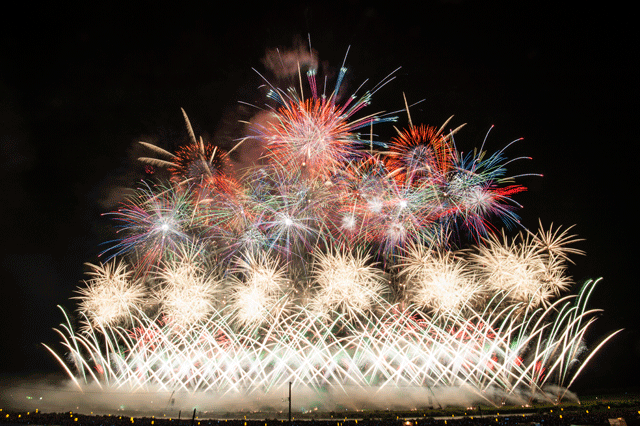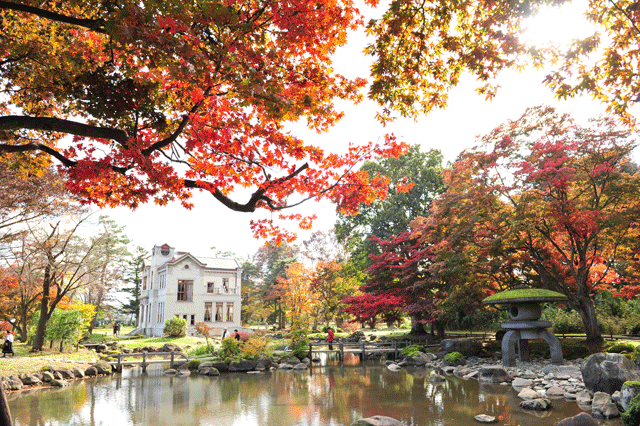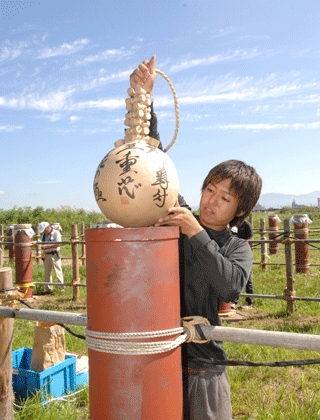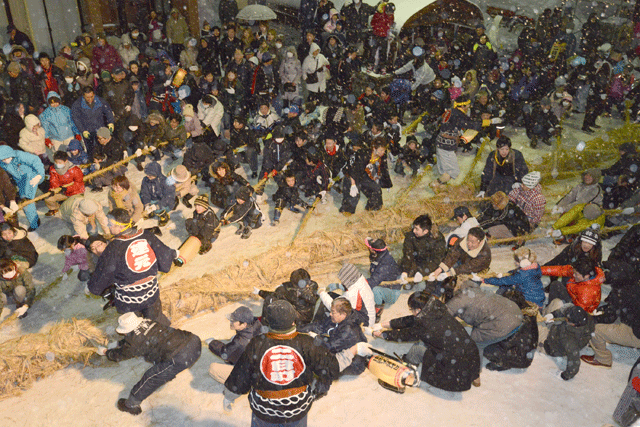Daisen’s history has been cultivated by Japan’s national crop, but it has gained its fame from a far brighter blossom.
Located on the central plains of Akita Prefecture, the city of Daisen has long been known as an agricultural powerhouse. In this part of the country, of course, agriculture means rice—almost always the celebrated Akita Komachi.
One of the city’s more colorful traditions is tied to the production of Japan’s staple crop. Held in winter, the Kariwano Tug-of-War is a friendly struggle that divides the city into north and south and pits the two sides against each other. On one of the city’s main streets, the opposing sides take up either end of a 10-ton, 65-meter-long rope made from rice straw. Fueled by a healthy sense of competition and plenty of sake (Daisen is also well known for its nihonshu), the struggle begins. If the north side wins, a bumper crop is predicted. If the south side takes the victory, the price for rice will go up—for a community that has depended on rice for its sustenance and success, it’s a battle that both sides win.
The Ikeda Family Garden
One of the three largest landowners in the entire Tohoku region, the Ikedas were a prominent family in Akita for centuries, and made a strong influence on politics, economy, and culture in the region. During the Meiji Period, Buntaro Ikeda, the 13th family head, was known for making major strides in improving the livelihoods of his workers and the tenant farmers who grew rice and other crops on the land. He invested the family’s fortunes into land improvement and farming technology, which helped increase social capital, welfare, and education. An old tale about Ikeda, which, apocryphal or not, shows that he recognized the potential of the rice grown on his land to help his family, and the families of those around him, prosper. As the story goes, one of Ikeda’s friends asked him which of his bonsai he was most proud of—he was known to have a remarkable collection of the painstakingly shaped trees. By way of answering the question, Ikeda grabbed a vase, thrust a handful of rice plants into it, and displayed it to his lord friend, while reciting a poem that he composed on the spot: “These treasure-grasses can make the country rich.”
Also inspired by the desire to increase the agricultural and cultural wealth of the region, his son, Bunichiro Ikeda, built a massive public library in the garden, with the express purpose of contributing to the education of the region’s children. Following the end of World War II, the enactment of land reforms allowed tenant farmers to buy their own land—perhaps not the kind of economic utopia that the Ikedas imagined, but it certainly provided a chance for local people to improve their lot. The garden is now held by the city of Daisen, and it is made open to the public for several months during the year. The garden will next be open this fall from September 19 to November 8.
A Long History of Lighting Up the Night
In addition to its rich agricultural production, Daisen is one of the best places in Japan to feast your eyes on flowers of fire, or hanabi as they are known in Japanese. Firework festivals are held throughout the year in the city.
Oddly enough, the history of fireworks in Japan is far shorter than you’d expect it to be, given that its larger neighbor across the sea had developed gunpowder and was already setting off fireworks displays by the 7th century. In fact, it is not recorded that the Japanese even saw the explosive black powder at work until the 13th century, when would-be invaders from Korea and Mongolia used primitive firearms in war. The Japanese would only get their hands on gunpowder, and the guns that used it, through trade with the Portuguese in the middle of the 16th century. Japanese inventors quickly began working on their own guns, but the powder that could send the bullets flying also found its way into applications much lovelier in nature, and not many years had passed before fireworks were used to mark great celebrations: apparently, Tokugawa Ieyasu was treated to a fireworks display that he viewed from the heights of the Edo Castle.
Japan is known for refining techniques and technologies to their utmost, so it was also not long before different pyrotechnicians began devising their own fiery formulas, making for new varieties of fireworks, from the humble sparkler to dazzling, night-lighting skyrockets. These high flyers became the main weapon in a series of battles waged in the heavens—not with the intention of causing destruction on the ground below, but with impressing those audiences looking up. Victors would not win new lands or impressive titles, but instead would be able to declare themselves the best fireworks makers in the land.
Daisen’s largest fireworks festival, the Omagari, takes place in August, when 18,000 skyrockets, launched by fireworks crews from around the country make the sky as bright as day. The firework maker’s art has improved drastically over the last hundred years, and these short-lived illuminations are not just limited to a spectrum of colors: the rockets burst in a variety of shapes and patterns. But among long-time fans of these nighttime displays, one old tradition has not changed: among the oohs and ahhs from the crowd, you’ll also hear cries of “Tama-ya!” and “Kagi-ya!” These are the names of two of Japan’s oldest fireworks companies, and their long history of excellence in this evanescent art lives on each time a viewer calls out after a particularly brilliant display.
For more information:
daisenkankou.com/fireworks/calendar.html
www.city.daisen.akita.jp/docs/ikedashiteien/2013110400095/
Sponsored Post












